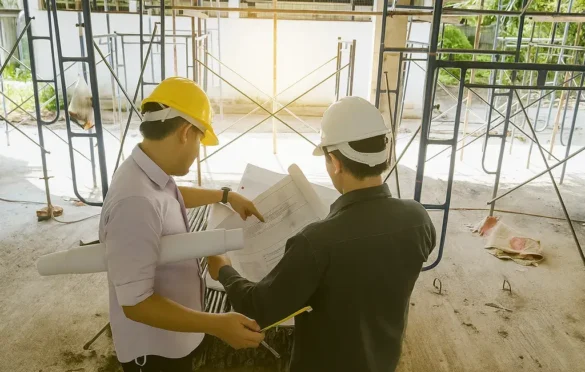Explore this post with:
Your roof is an essential aspect of your home. t helps keep you and your family safe, warm, and dry. Are you giving it the attention it deserves? If not, according to roofing contractors frisco tx, you may want to add routine roof inspections to your schedule. A small amount of damage can snowball into a large problem quickly. Below are several signs it’s time to repair your roof.
1. Water Staining

A leaking roof can leave water staining throughout your home. Stains can manifest on your interior walls, ceilings, rafters, sheathing, and siding. If left untreated, the water spots can turn into mold and deterioration. So, be sure to identify where the leak is originating and reach out to professionals to learn more.
2. Clogged Drain
Again, if water doesn’t drain out properly on the roof, it reduces your roof’s lifespan and causes algae and vermin in the gutter. Therefore, take a look at the gutter whether you have a clogged drain. You can clean it on regular basis to avoid such inconvenience. But if it’s a severe problem, repairment of the roof drainage system is the only solution.
3. Missing Shingles

Take a walk on your roof or use binoculars from the ground to view your shingles. As your roof ages, extreme weather will begin to loosen the materials. High winds and animals can then remove your shingles. Your exposed roof will be at risk of damage until the shingles are replaced.
4. Curled Shingles
All your shingles being present doesn’t necessarily mean your roof is in good shape. Watch out for shingles that begin to curl around the edges. Not only are curled shingles more susceptible to breaking, but they also fail to protect your roof from heavy rains. Three causes of curled shingles are poor attic ventilation, age, and ice build-up.
5. Spongy Feeling
When you walk your roof, pay attention to how it feels below your feet. If you notice a sensation like you’re walking across a trampoline, there’s a problem. That bouncing spongy feeling can mean that the surface has weakened from prolonged moisture.
6. Asphalt Granules

If you have asphalt shingles, elements like hail, storms, and age will cause granules to fall off. You will start to see tiny asphalt pieces in your gutters and near your downspouts. Once a few granules are removed, more will continue to peel off. Inspecting the shingles will show bare spots that leave your home at risk.
7. Damaged Soffits or Fascia
Soffits and fascia are the areas just below your gutters. They are mostly made of wood, which means exposure to water will cause damage. Take a close look at staining, rot, cracks, decay, and missing pieces. If you see any negative signs, your roof or gutters may be leaking so you need to repair your roof.
8. Sagging Areas
Examine your roof from every angle to look for dips. Sagging ceilings and uneven roofs are a sign that your rafters, framing, or sheathing might be structurally unsound. To verify, touch the ceiling with your hand and if it feels soggy, it’s caused by excess moisture. Hence, any rotten roof should repair or replace immediately.
9. Visible Growth

Moisture trapped in your roof can cause mold, fungi, and moss to grow. It is particularly common in shady areas and roof seams. Mold and fungi are dangerous to your health and expensive to remediate, so it’s best to treat them early on. Moss can begin to spread under your shingles and dislodge them.
10. Missing Flashings
Flashings are a thin material used to seal your roof where it meets a vertical wall. They help direct water away from your chimney, skylights, vents, and seams. Additionally, tar or roof cement flashes at the chimney base are susceptible to leaking and it’s an immediate sign for your roof replacement. Though in some cases, you may only replace the flashing with a durable galvanized steel flash or coat with anodized aluminum.
11. Temperature Difference
The attic temperature is supposed to be the same as the outdoor because there should be enough ventilation to circulate the air in the attic. Proper ventilation is important to prevent the formation of the ice dam. So, if your attic temperature is warmer than the outside, your home is vulnerable to an ice dam.
12. Old Age
The lifespan of roofs depends on several factors. The material it’s made out of, your climate, and the quality of install will all play a factor. On average, a roof should last around 30 years. It is wise to consider having a professional do a routine inspection once your roof is approximately 20 years old.
Final Words
These are the definite signs that your roof may not be in tip-top shape. If you notice any concerns, it’s best to address them quickly.
For More Information
About the Author: archistyladmin
At Architecturesstyle, we’re passionate about smart design, beautiful spaces, and practical tips that help you bring great architecture into everyday life. Whether it's modern home ideas, iconic buildings, or expert advice, our team brings fresh and useful content to readers who love architecture as much as we do.




